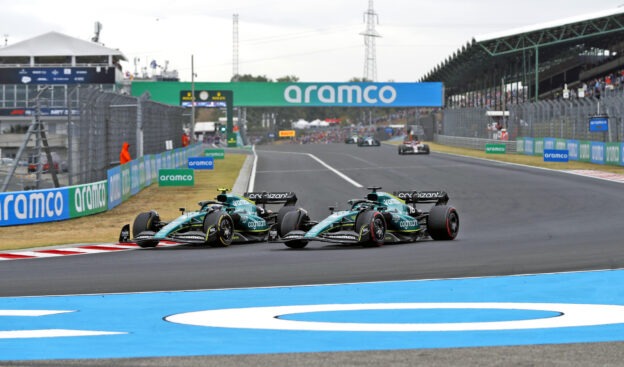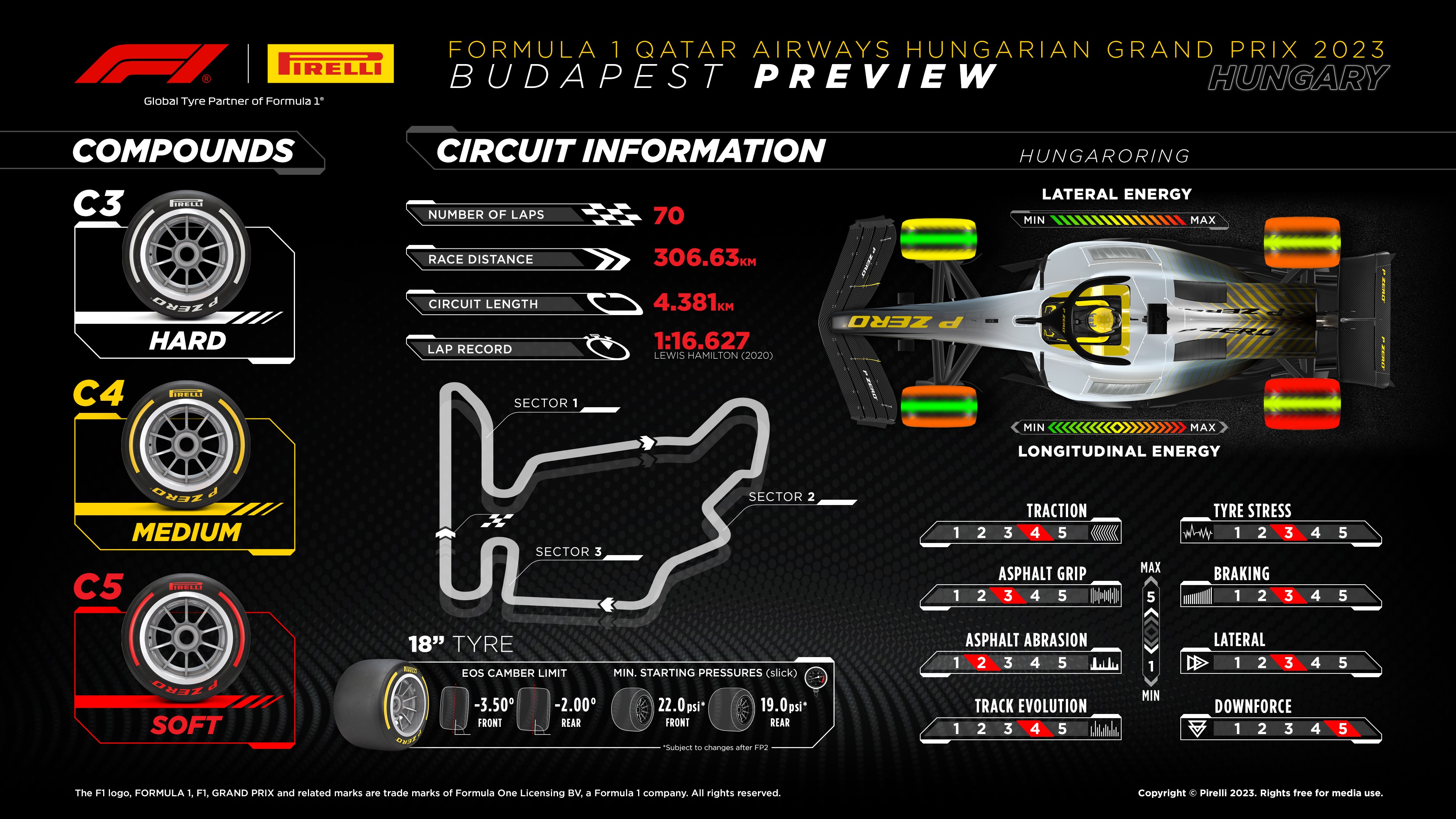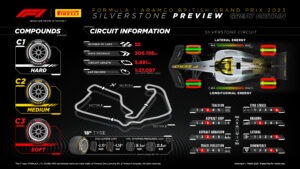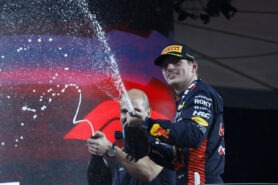From Nuvolari to Hamilton: Celebrating 87 Years of Racing Excellence in Hungary

Jul.20 - Roaring engines, nail-biting overtakes, and strategic masterstrokes—welcome to the world of Formula 1 racing at the Hungaroring. Nestled in the heart of Hungary, this iconic circuit has witnessed 87 years of gripping action, making it a favorite among drivers and fans alike. From historic victories and unexpected triumphs to jaw-dropping maneuvers, the Hungarian Grand Prix has etched its name in the annals of motorsport history. As we gear up for the 2023 edition, join us as we delve into the fascinating facts, mesmerizing moments, and thrilling track dynamics that have defined this legendary race. Get ready to embark on a journey through time and explore the exhilarating world of the Hungarian Grand Prix.
2023 Hungarian GP Facts & Figures
The first Hungarian Grand Prix was held in 1936 at Népiglet. The race was part of the Grand Prix season (European Championship) and was won by Tazio Nuvolari behind the wheel of an Alfa Romeo. The 2023 edition will be the 38th Hungarian Grand Prix as part of the Formula 1 World Championship.
The first Formula One World Championship race at Hungary took place in the 10th of August of 1986 and was won by Brazilian Nelson Piquet after an amazing overtake on pole-sitter Ayrton Senna and his Lotus 98T. It was the first Formula 1 race held behind the Iron Curtain.
The inaugural Hungarian Grand Prix was Alain Prost's 100th Grand Prix, but the four-time F1 champion couldn't finish that race.
In Hungary, World Champions Damon Hill, Fernando Alonso and Jenson Button achieved their maiden Formula 1 victories in 1993, 2003 and 2006, respectively. Most recently, Heikki Kovalainen took his first Grand Prix win in 2008 and Esteban Ocon became a Grand-Prix winner in 2021.
The event has also seen two drivers clinch titles. Nigel Mansell sealed his only championship in 1992 with a second place, while Michael Schumacher did it in 2001 by taking his 51st Formula 1 victory (tying the then all-time win record held by Prost) and winning his fourth title.
Sir Lewis Hamilton is the most successful driver at Hungary, with eight victories. The seven-time champion won the race three times with McLaren (2007, 2009 and 2012) and five with Mercedes (2013, 2016, 2018, 2019, and 2020). In 2013, Hamilton achieved the first of his 82 wins with Mercedes in Hungary.
Michael Schumacher ranks second in the wins tally with four, one with Benetton in 1994 and three with Ferrari (1998, 2001 and 2004).
Apart from Hamilton, Fernando Alonso (2003), Daniel Ricciardo (2014), Esteban Ocon (2021) and Max Verstappen (2022) are the other active drivers with wins in the Hungaroring.
Among teams, McLaren leads the ranking with 11 victories, followed by Williams and Ferrari with seven each.
Mercedes' engines have won 13 races at Hungary, followed by Renault (nine) and Ferrari (seven).
Hungaroring Track info
Though the 14-corner 4.381-meter circuit has been criticised for some races with small number of overtakes, the venue has given F1 fans some fantastic racing, especially when the weather has been mixed, as in 2006 or 2014.
Downforce is essential at this circuit and track position represents a big part of a significant result on Sunday. Of course, Max Verstappen and Red Bull threw that theory out of the window in 2022, with the Dutchman winning from ninth place, but it still applies for the rest.
The strategy is also very important. While some races have given us similar strategies among the front runners, we have seen in 1998 and 2019 race-winning performances with a pit strategy utterly different from the usual.
Turn 1 is the main overtaking spot at this track. However, Turn 2 offers chances for good battles, since drivers can take different lines to make a successful move. Turn 4 has also been a place to overtake, although it is quite risky. In conclusion, the first sector of the Hungaroring is the place where a move can be made when battling for position, while Sectors 2 and 3 are tricky sections that have been rough to go through while following a car.
The circuit has had three different configurations since its inauguration in 1986. First, the track had a 4.014 km layout with 16 corners, but it had an 'S' chicane at the then Turn 3 that was later eliminated for the 1989 event (making it a 3.968 km circuit until 2003). That chicane was a provisional measure to avoid an underground spring.
In 2003, the final sector was changed and the main straight was made around 200 meters longer to generate better racing chances in that section. A longer straight was added between corners 11 and 12 and the latter was made as a tight right-hander. The first corner was also tighter and is one of the current layout's best zones for wheel-to-wheel combat.
The lap records on the current layout (since 2003) are held by Lewis Hamilton from the 2020 event: 1:13.447 min (outright) and 1:16.627 min (Fastest Lap during the race).
✅ Check out more posts with related topics:














These left-wing jouno's just don't miss a chance to drool at the feet of Dame Lucille. ANY excuse will do to shoot hot-air into The Dames dirigible-sized head. She is reviled by so many - like the Prime Minister of The Democratic Peoples Republik of Kanada - yet the press just won't shut-up about them.
Dame Lucille and Tonto are emotionally negotiating his contract, while at MB HQ on Berlinstrasse, Mr. Burns is heard to mutter "Excsssellent - I love it when a plan comes together."
I iterate - sorry ROR - that MB is going to "Nico" The Dame at the end of the 2023 season.
✅ Checkout the latest 50 F1 Fans comments.